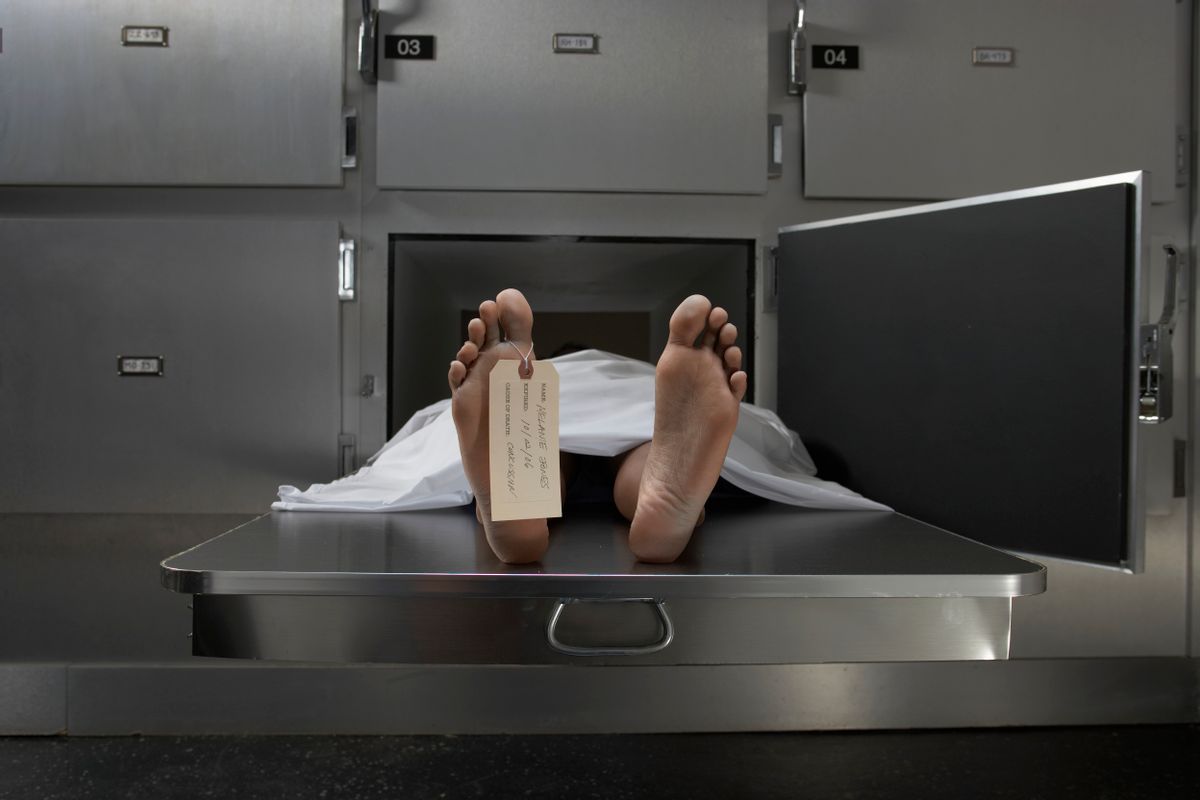While it is true that dead bodies exhibit goosebumps, the biological process that triggers the fleshy bumps is different in the deceased than it is in the living.
Known by many names, experiencing goosebumps (or goose pimples or goose flesh) is a part of the human experience. Whether because of a cold wind or a startling surprise, every living person will have goosebumps at some point in life.
Just as the living experience goosebumps, so do the bodies of dead people.
To learn more about this post-mortem phenomenon, Snopes spoke with Heather Brown, a mortician-turned-death-investigator based in New Orleans, Louisiana. She told us that as with the living, the bodies of dead people can also experience goosebumps — though by way of a different biological process.
“It’s one of the amazing displays our bodies exhibit when they begin to break down," said Brown. “So, immediately after the death occurs, the decomposition process begins. What you’re seeing with postmortem ‘goosebumps’ is rigor mortis.”
In the living, cutis anserine is the medical term given for goosebumps and defines a temporary change of skin from smooth to bumpy, namely after being exposed to cold temperatures, wrote Dr. Robert Shmerling, in a Harvard Medical School blog. (Other medical terms include norripilation, piloerection, and pilomotor reflex.)
“Goosebumps are the result of tiny muscles flexing in the skin, making hair follicles rise up a bit. This causes hairs to stand up. Goosebumps are an involuntary reaction: nerves from the sympathetic nervous system — the nerves that control the fight or flight response — control these skin muscles,” wrote Shmerling.
In those who are alive, goosebumps are triggered by a reaction of the autonomic nervous system to external stimuli. But in the deceased, it’s an internal chemical process caused by decomposition.
“We have these little, tiny muscles around our hair follicles called ‘arrector pili.’ So that tiny muscle, along with all our other muscles, go through the temporary change of rigor mortis that lasts several hours after death occurs,” explained Brown.
“This change in the body is brought on by the depletion of an energy-carrying molecule known as adenosine triphosphate (ATP) after death with the subsequent accumulation of lactate acid in the muscle tissue. This results in the inability to release the actin-myosin bond, which is required for muscles to ‘loosen.’ That, along with the lack of calcium in the mix, is about the gist of it!”
Sources
MD, Robert H. Shmerling. “Wondering about Goosebumps? Of Course You Are.” Harvard Health, 3 Aug. 2020, https://www.health.harvard.edu/blog/wondering-about-goosebumps-of-course-you-are-2020080320688.

